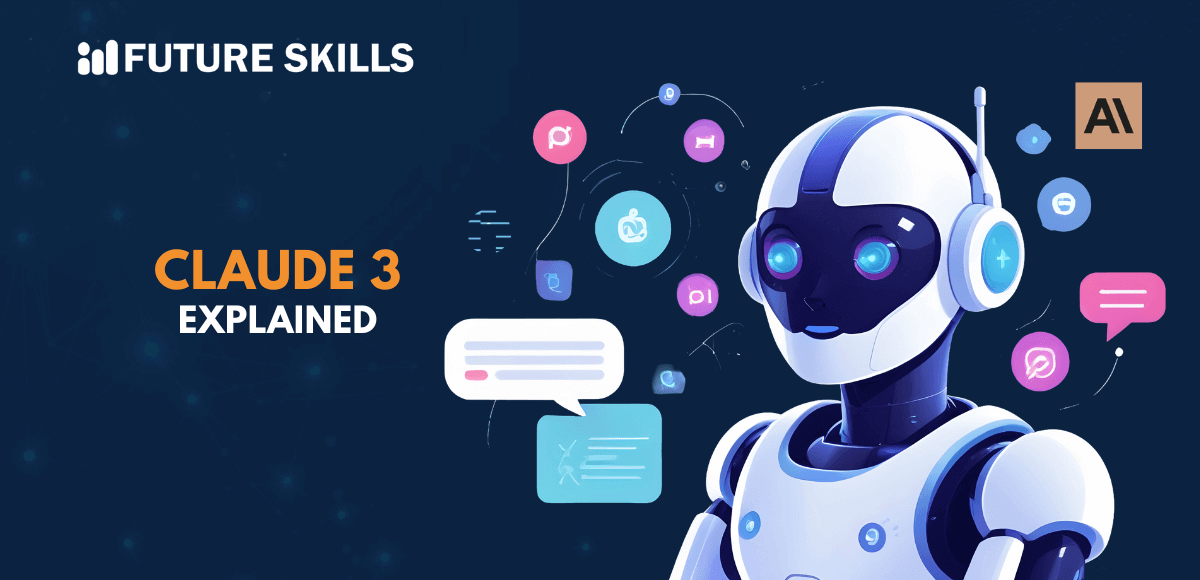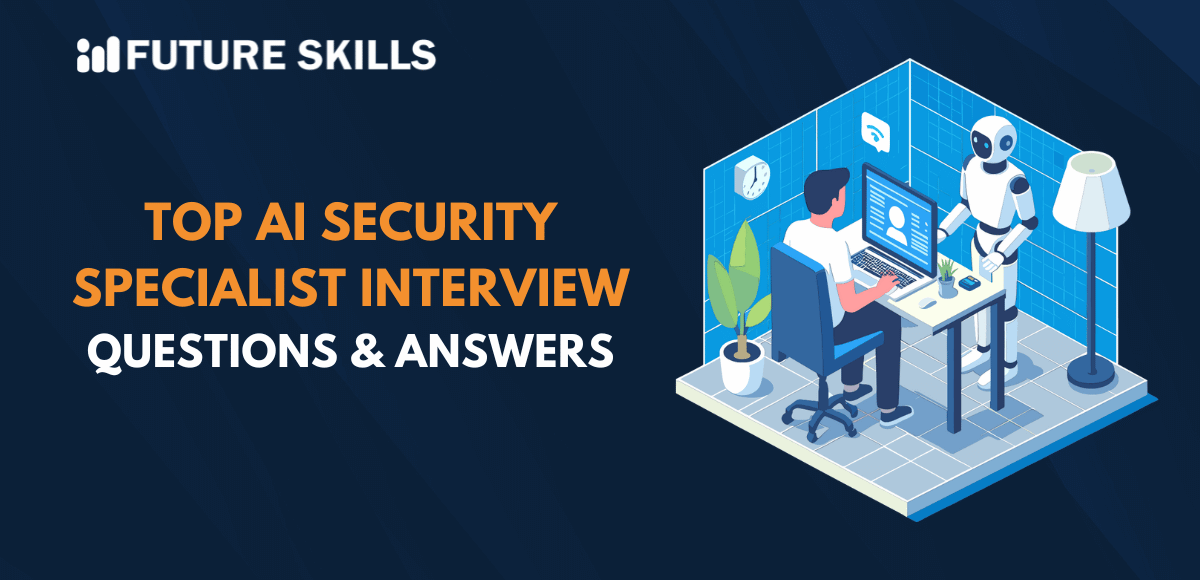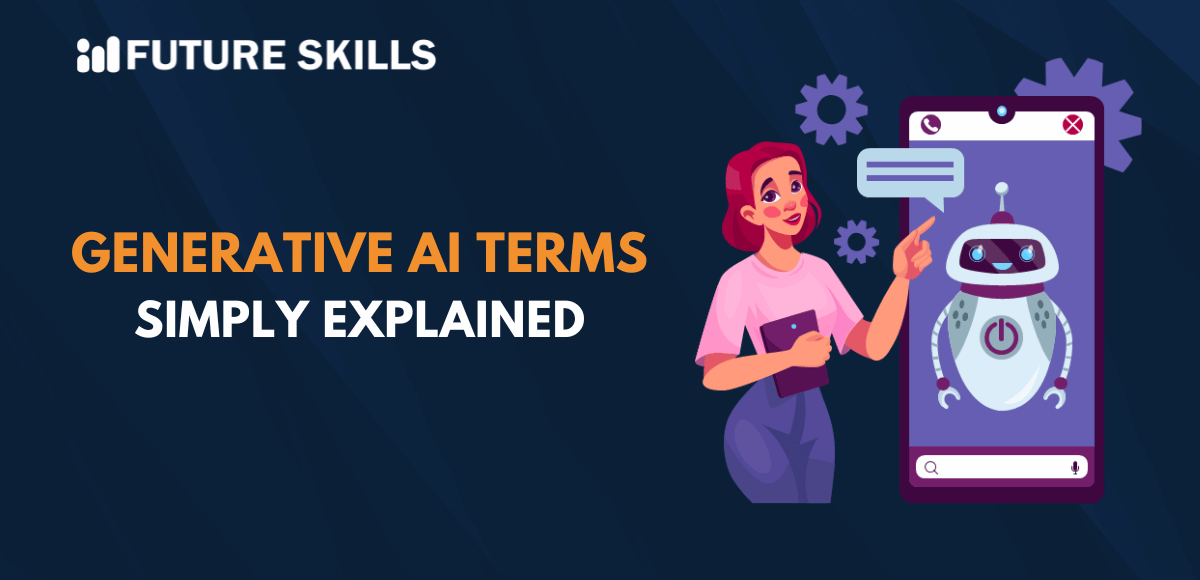The artificial intelligence revolution initiated by OpenAI with ChatGPT has gained momentum, unlike any other trend in modern technology. Google has been in the news for rebranding Bard as Gemini with better features and performance. Interestingly, the latest contender in the AI war is Claude 3 by Anthropic. The unique highlight of Anthropic Claude is that it represents a family of LLMs tailored to transform conventional approaches to interactions with AI systems.
The Claude family of models performs effectively in different types of tasks such as language processing, coding, reasoning, and analysis. On top of that, the models offer easier usability and flexibility for customization according to your requirements. The Claude family includes three distinct models: Haiku, Opus, and Sonnet. Let us find more insights on Claude AI and its capabilities.
Are you interested in becoming an AI professional? Our Certified AI Professional (CAIP)™ course is your stepping stone to master AI skills and become a job-ready expert.
Fundamentals of the Claude 3 Model
One of the prominent highlights in responses to “What is the Claude 3 model?” is that Claude 3 is not one specific model. On the contrary, Claude 3 brings you three different models that have established new standards of performance in different types of cognitive tasks. The three powerful models of Claude 3, Haiku, Opus, and Sonnet, can help you with real-time customer chats, data extraction tasks, and auto-completions. You can access Opus and Sonnet through the Claude API or claude.ai website. Anthropic has reported that Haiku will be released for public availability soon.
The most significant feature of Claude 3 models is the assurance of better performance on complex and multi-step instructions. They can generate structured output in popular formats such as JSON and ensure compliance with response guidelines and brand voice. As compared to the Claude legacy models, such as Claude 2.0, Claude 2.1, and Claude Instant 1.2, the new models work with better contextual understanding.
With a context window of 200,000, the new family of Claude models has the capability to process inputs that can exceed 1 million tokens. On top of this, Opus has exhibited almost perfect accuracy, at 99% recall capabilities.
Overview of Models in the Claude 3 Family
The new family of models in Claude 3 has been tailored for versatility, better ease of use, and better performance. The benefits of Claude 3, explained in the whitepaper, show that the models can perform effectively in open-ended conversations, work with text, code tasks, and collaborate on new ideas.
You can work with a broad range of text-related tasks, such as writing, searching, summarizing, editing, and translation. In addition, the Claude models also excel with advanced vision capabilities that help in processing and analyzing visual input, including images, charts, and graphs. Take a look at the unique highlights of each model included in the Claude 3 family.
-
Opus
The most prominent model in the Claude family is Claude 3 Opus, which offers better capabilities for complex tasks that require high intelligence. It is the ideal model for strategic analysis and open-ended problem-solving as it offers a larger context window. However, Opus’ advanced capabilities come at a higher cost. You can use Opus at a price of $15 per million input tokens and $75 per million output tokens.
-
Sonnet
Sonnet has been tailored to offer the ideal balance between intelligence, cost, and speed. Basic guides to learn Claude 3 would showcase that Sonnet is the ideal choice for enterprise-scale workloads. It offers impressive performance for sales optimization and data processing tasks alongside facilitating scalable deployment of AI systems. The pricing of input tokens in Sonnet is $3 per million and $15 per million output tokens.
-
Haiku
Haiku is the most compact and fastest model in the Claude family. It offers seamless AI experiences alongside better responsiveness. The capabilities of Haiku make it the perfect pick for content moderation and customer service tasks with lower costs. Therefore, it is the most responsive and cost-effective addition to the Claude 3 suite. The price of using Haiku is $0.25 for a million input tokens and $1.25 for a million output tokens.
What are the Notable Features of Claude AI Models?
The answers to “What is a Claude model?” emphasize the assurance of enhanced features as compared to top players, such as ChatGPT and Google Gemini. At the same time, it is also important to wonder about the additional advantages that Claude brings to the table. Here are some of Claude’s most notable features.
-
Vision and Image Processing
All the Claude models are capable of processing and analyzing visual input to extract insights from documents. On top of it, Anthropic Claude models can generate image catalog metadata and process web UI alongside other vision capabilities.
-
Model Upgrades
Another important aspect of Claude models is the facility of regular updates. The Claude family of models would offer frequent updates to improve performance and expand their capabilities. In addition, the upgrades would also help in addressing unidentified problems with the models. Most importantly, the updates would guarantee that workflows in one model version would continue seamlessly even with the new version.
-
Multilingual Capabilities
The next interesting feature of Claude 3 models is the multilingual support facility. Claude models are also fluent in working with non-English languages such as Japanese and Spanish. Therefore, Claude’s models can offer better performance in global content creation and translation services.
-
Ease of Use
Users can tap into the functionalities of Claude models seamlessly, as the models are highly responsive to user directions. As a result, you can have better control over the behavior of Claude models. You can be assured of high-quality and more predictable outputs.
Learn about the different types of AI applications, and how they are transforming different industries and showing us endless possibilities.
How Do Claude Models Perform on Different Benchmarks?
The performance of Claude models on different benchmarks against other top-performing LLMs is one of the strongest reasons to use them. As a matter of fact, the benefits of Claude 3 explained in detail would help you find that they have achieved promising enhancements across different tests. Opus has proved to be the best of the lot by outperforming Gemini Ultra and GPT-4 on commonly used evaluation benchmarks. For example, Opus has performed better than other AI models in the market on MMLU, GSM8K, and GPQA benchmarks.
The power of Claude 3 Opus in achieving complex tasks fluently alongside showcasing human-like contextual understanding indicates the possibility for transition towards general intelligence. It is also important to remember that the new Claude models perform better at generating answers in non-English languages, as well as in analysis forecasting and code generation.
On top of it, the visual capabilities of Claude’s models have improved by a huge margin. The models can understand complex charts, images, and diagrams. Businesses that use image data in different formats, such as presentation slides, PDFs, and flowcharts, can benefit from such enhancements.
Another significant improvement you would come across as you learn Claude 3 fundamentals is the reduction of unnecessary refusals. The assurance of enhanced contextual understanding helps in supporting such improved functionalities. Most importantly, Claude’s models offer better accuracy than those of the Claude legacy models. You would notice that Claude 3 family of models can showcase two times better accuracy for open-ended questions in comparison to Claude 2.1.
How Can You Access Claude 3?
The overview of advanced functionalities of Claude models showcases how they can be the most powerful contenders in the AI revolution. You can access Claude 3 models through three different approaches: Claude Chat, Workbench, API, and SDK. Here is an outline of the different ways in which you can access the new family of Claude models.
-
Claude Chat
The simplest and most free method to use Claude AI models is Claude Chat interface. You can sign up directly using the claude.ai/chats link, which is similar to ChatGPT. The Claude Chat interface offers easier usability and interactive access to Claude functionalities. As of now, you can access Sonnet for free. However, you can access Opus only by purchasing a monthly subscription to Claude Pro.
-
Workbench
If you want to access Claude 3 Opus without any cost, then you must sign up with the Anthropic API on console.anthropic.com. You can follow the simple instructions to sign up for Claude Opus for free. Subsequently, you can begin using the Opus model through the Workbench tab, where you can select the ‘claude-3-opus-20240229’ model.
-
API and SDK
Another proven approach for accessing Claude models is the Claude 3 API. Anthropic serves SDKs or Software Development Kits tailored for Typescript and Python. Users could also use the REST API with the ‘curl’ command to access the Claude models. Here is the command that can help you access Claude’s models.
curl https://api.anthropic.com/v1/messages \
--header "x-api-key: $ANTHROPIC_API_KEY" \
--header "anthropic-version: 2023-06-01" \
--header "content-type: application/json" \
--data \
'{
"model": "claude-3-opus-20240229",
"max_tokens": 1024,
"messages": [
{"role": "user", "content": "How many moons does Earth have?"}
]
}'Harness the power of ChatGPT and become a Certified ChatGPT Expert with our comprehensive course designed for every enthusiastic learner. Enroll today!
Final Words
The introduction to a new family of Anthropic Claude models heralds the beginning of a new phase in the AI revolution. As a new wave of AI models make their way into the market, Anthropic has come up with innovative enhancements. Most important of all, Claude’s models offer the advantage of better contextual understanding, thereby reducing unnecessary refusals. On top of it, the new models in Claude 3 have performed exceptionally better on different popular benchmarks. Discover more insights on the fundamentals of Claude models to know more about their capabilities right now.
Enroll in our highly trusted Certified AI Professional (CAIP)™ program that will open numerous career prospects in different industries by learning from highly qualified industry experts.





